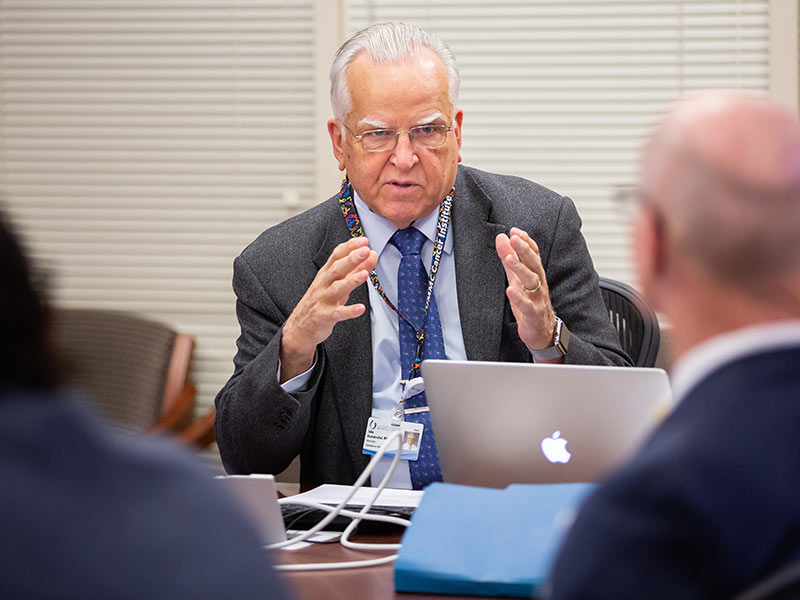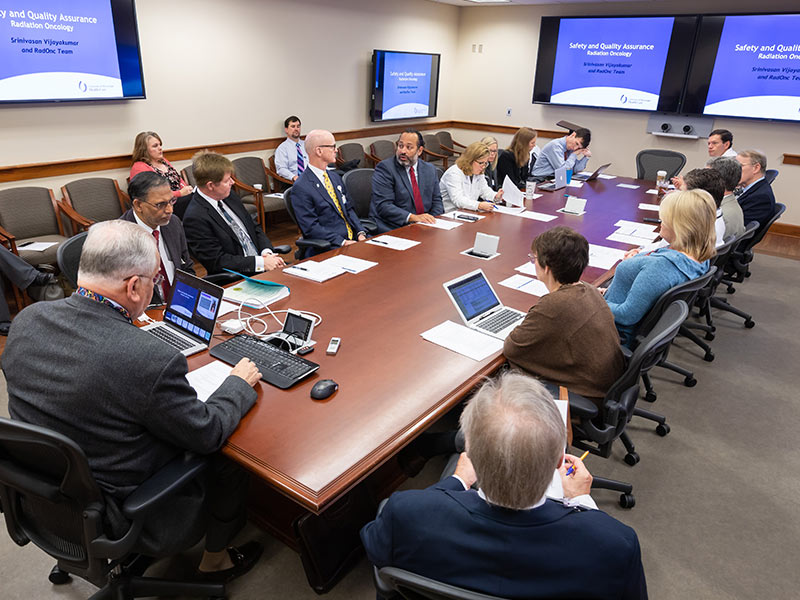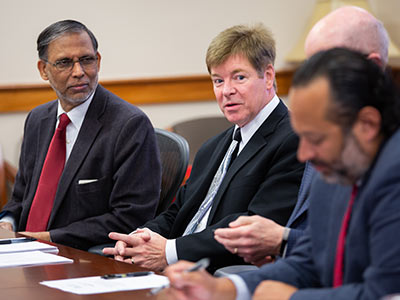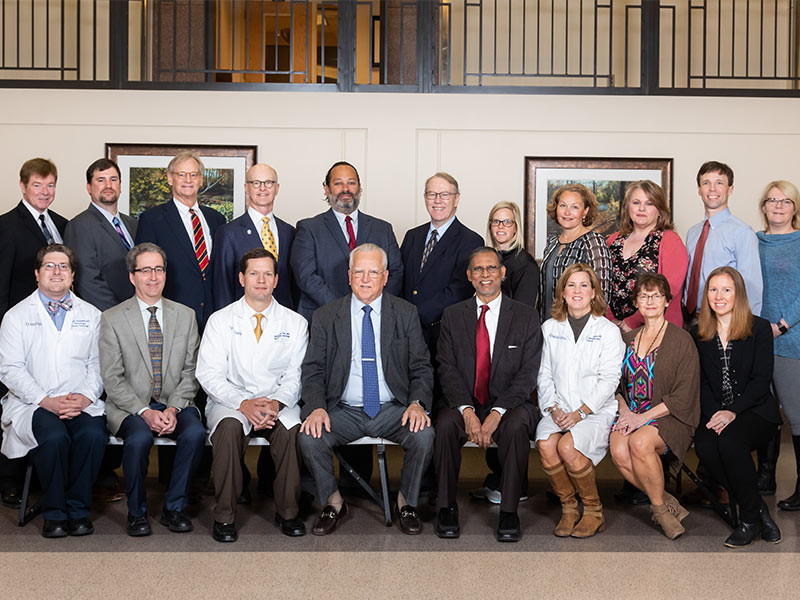New committee’s goal: Improve cancer care through communication

Once a month about two dozen men and women, representing multiple layers of cancer assistance, gather at the University of Mississippi Medical Center to talk about how to improve the services they offer.
They’re all part of the UMMC Cancer Institute’s Clinical Leadership Council, whose members work to streamline clinical and administrative operations to improve cancer services.
“Cancer is a team sport. It requires teams to take care of people,” said Dr. John Ruckdeschel, Cancer Institute director and an oncologist in the Interdisciplinary Thoracic Cancer Program.
The interdisciplinary teams focus on specific types of cancer and always include a medical and radiation oncologist, surgeons, pathologist, radiologist, nurses and other specialists as needed. Each team is represented on the council as are pharmacy, social workers, hospital administration, finance and legal.
The goal is to have every new patient’s care discussed prospectively by all those who will be involved, Ruckdeschel said. The ultimate goal is to achieve excellence in each of the CI’s 10 adult cancer programs.
“First you have to ascertain the differences between quality and excellence,” he said. “Quality represents the lowest common denominator. If we do it to just that level, we’re still not where we want to be.

The Cancer Institute’s medical staff has to achieve quality before it can strive for excellence, Ruckdeschel said.
The physicians, department heads and administrators work to ensure the UMMC Cancer Institute is providing service in accordance with best practices of multiple organizations, removing obstacles to patient care and making sure they’re using the latest therapies backed by sound scientific research.
“Within our cancer operation, we think we have the quality issues done,” Ruckdeschel said. “We’ve had the advantage of meeting Commission on Cancer standards and have met those for years. Now we want to achieve excellence and outstanding medical care.
“Excellence is a totally different process. We have to define excellence for each program. We are beginning to build and set the standards for excellence, then we have to meet them.”
Dr. Pierre de Delva, who leads the Thoracic Program, agrees. “We’re going to set our benchmarks, measure our work and track our progress,” he said.
Dr. Clark Henegan, who leads the Interdisciplinary Genitourinary Cancer Program, said each team is asked to search for a few measures the team can tackle to rise above the norm.
“The CLC facilitates discussions that go beyond what is quality and how can we achieve it to what does a patient need?” said Henegan, assistant professor of hematology and oncology.
The monthly meetings serve many other purposes too, say those who are involved:
- “It’s a tool for the leader of the Cancer Institute to engage with frontline providers and get information into research and translational research hands,” said de Delva, associate professor of thoracic surgery.
- It’s a forum to discuss what’s working within the programs. “We can steal ideas and share resources,” Henegan said.
- It’s a place to resolve problems or identify inefficiencies, De Delva said. He points to the Thoracic team’s efforts to have a tobacco cessation counselor in clinic. “We’ve talked in the CLC about the smoking cessation program and now we’re bringing it into the clinic.”
The team also made the decision to talk to patients, and the family or friends with them, about why they should quit using tobacco. Bringing all the professionals a patient needs to see to the patient, is a cornerstone of the program’s goals.
- It’s a place to discuss improvements, Henegan said. For example, he plans to ask if the order he has to sign to have a biopsy sent to pathology can be bundled in the electronic health system with the order he signs to get the biopsy. He always needs both and that would save him time in searching for each separately.

Officially, CLC members have several duties including being asked to:
- Recommend the appointment of all new and existing clinicians in the institute and the respective priority of those appointments,
- Oversee interdisciplinary teams, approve new team leaders, new teams and review and disband teams that are no longer needed,
- Oversee specialized clinics, implement new ones when needed and review and disband those that are no longer needed,
- Review and approve clinical affiliations with other sites and
- Serve as a clearinghouse for prioritizing budget needs for the hospital and clinics.
Bringing the questions to a group that is involved in providing the services helps streamline work and improve the process.
“Here we choose to focus on interdisciplinary care,” de Delva said. “No one function is independent of the whole.”
The CLC broadens that approach by allowing each program to enhance what it can offer patients in terms of better care, faster times in and out of the clinic and coordination of services.



